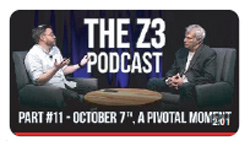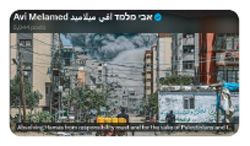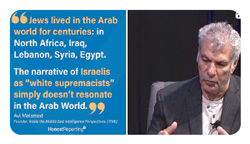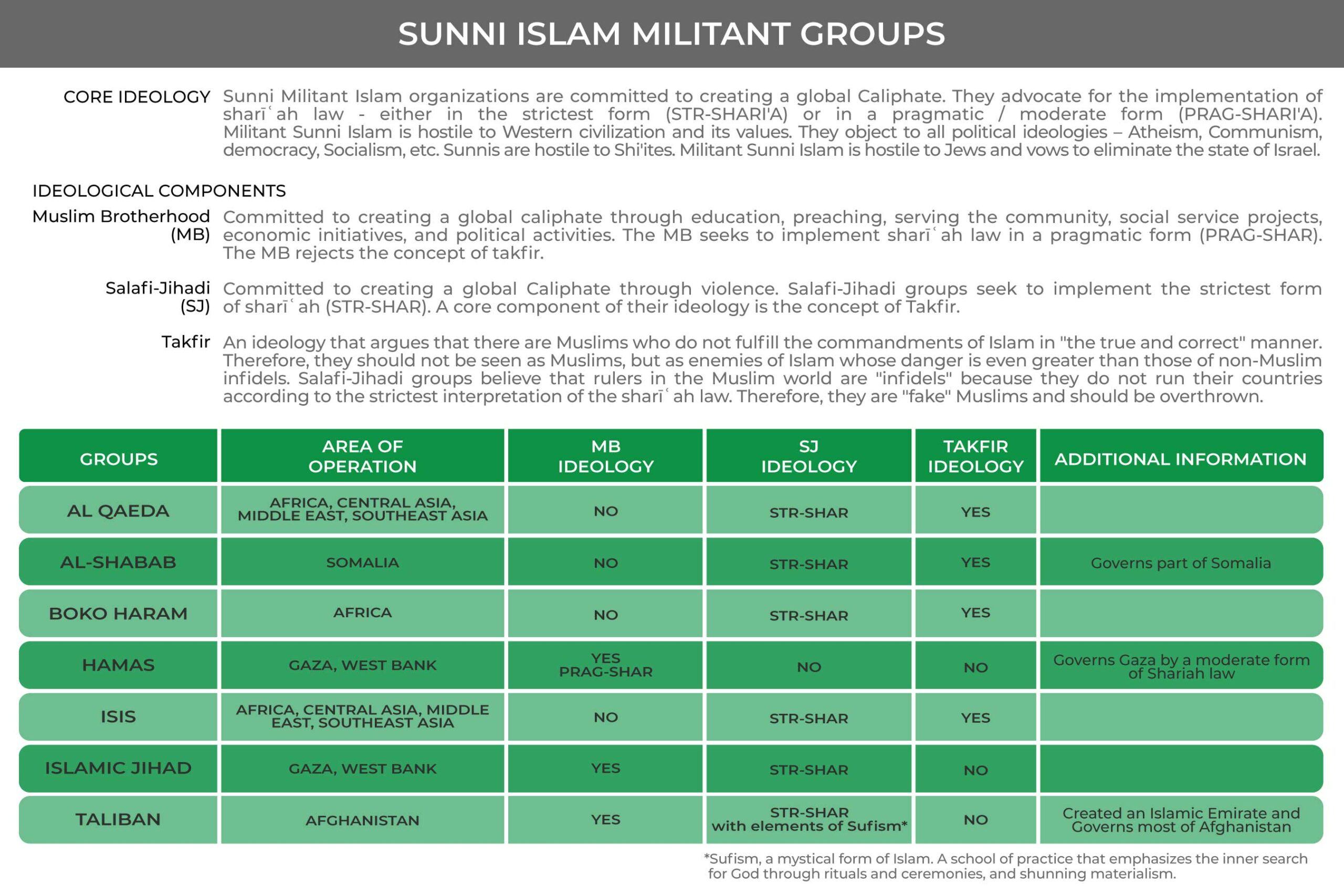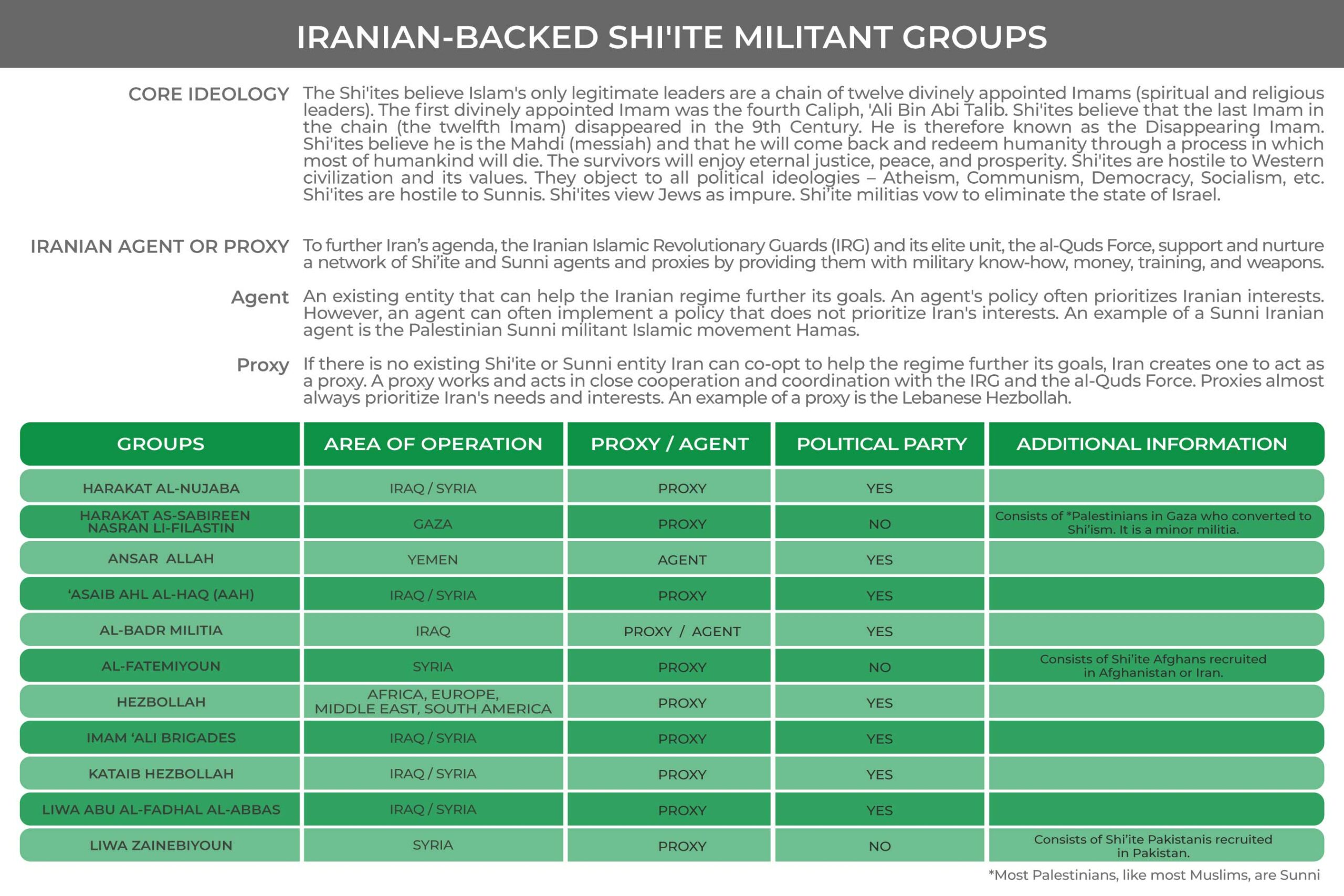|
Getting your Trinity Audio player ready...
|
Session Six | THE MIDDLE EAST ENTERING A NEW ERA
Session Agenda
Summary | Where We Left Off
Gaza – SHORT introduction
How Did We Get Here?
Why Did Hamas Launch The War?
TOWARDS A MULTIFRONT War?
THE ARAB WORLD AND THE WAR
The DAY AFTER
Introduction to the Next Class + Q & A
Overview
The current war between Israel and Hamas is a defining moment in the Middle East. As the world grapples with the escalating conflict, understanding the core issues becomes increasingly vital. Are we fully aware of what fuels this war? What led us to this critical juncture? Are we heading towards an expanding multi-front regional war? What does “the day after” look like? What implications does it hold for the region? What are the lessons for the West?
Background Reading For Session 6
Biden’s Risky Bet: Withholding Weapons from Israel Threatens More than Military Outcomes | USA TODAY | May 10, 2024
Absolving Hamas from responsibility must end for the sake of Palestinians and Israelis | USA TODAY | May 1, 2024
Iranian Attack on Israel | Initial Insights from a Middle East Expert | April 14, 2024
The West Must Speak in a Language that the Iranian Regime Understands | USA TODAY | March 16, 2024
Avi Melamed Report to The Committee of Foreign Affairs of the House of Representatives of the Netherlands | February 8, 2024
Hamas Instagram Post Indicates Fracture in Resolve and its Unwillingness to Compromise | USA TODAY | January 31, 2024
Reclaiming America’s Leadership in the Middle East | Biden’s Success and the Danger of its Erosion | THE HILL | December 17, 2023
Hamas is not a Band of Freedom Fighters. They are Terrorists — like ISIS and al-Qaida | USA TODAY | December 15, 2023
ToWweaken Iran, Exploit the Tensions within its ‘Axis of Resistance’ | November 15, 2023 | NEW YORK POST
Will Hezbollah Join The Conflict? 3 Reasons It’s Hesitant | USA TODAY | October 12, 2023
Why Did Hamas & The Islamic Jihad Launch A War Against Israel | INITIAL OBSERVATIONS | October 7, 2023
FOR MORE OF AVI’S ANALYSIS, PLEASE VISIT THE ITME HUB
Lexicon for Session 6
Al-Muqawama w’al Muman’aah
“The Resistance and Defiance.” It is an idea and a concept that spread within the Muslim world’s intellectual, political, and cultural discourse following World War II. Initially, it was primarily in the context of the North African struggle to end Western control. The original idea was that the way Arabs and Muslims—as communities and as individuals—can enhance their lives is through the creation of a cultural and political life that emphasizes the enlightened moral values of Islam, the noble tradition of Arab culture, combined with the modern concepts of emancipation and statehood. In the last generation, al-Muqawama has become ‘the code word’ for the rejection of Western power, the destruction of the State of Israel, and liberating Palestine. Under this concept, Iran embraces and finances a set of execution agents.
Ali Khamenei (1939–)
Iran’s Supreme Leader since 1998. He succeeded Ruhollah Khomeini, the founder of the Islamic Republic of Iran.
Al-Hashd Al-Sha’abi
“The Popular Resistance Committees” or “PMU.” A state-sponsored umbrella organization made up of Iraqi militias (most of whom are Shi’ite). The origin of the PMU was a group of militias that fought from 2014 to 2017 alongside the Iraqi army to defeat ISIS in Iraq. In July 2016, the Iraqi parliament passed a law making these militias an official Iraqi military apparatus that operates in parallel to the Iraqi military. The main PMU militias are close to Iran, and some of those militias are practically under the command of the Iranian Revolutionary Guards (IRG).
Ansar Allah
The military force of the Shi’ite Houthi tribes in Yemen. An Iranian agent.
Arab/Persian Gulf
A 615-mile-long extension of the Indian Ocean between Iran and the Arabian Peninsula
Axis of Resistance and Defiance “Mihwar al Muqawama w(al) Mumanna’ah ”
Under the banner of Al-Muqawama w(al) Mumanna’ah (the Resistance and Defiance), Iran cultivates and finances a powerful network of allies, agents, and proxies such as Hezbollah in Lebanon, Hamas and Islamic Jihad in the Gaza Strip, Iraqi Shi’ite militias, Afghan Shi’ite militias, Pakistani Shi’ite militia, the Houthi tribes in Yemen and other proxies in the region. Their role—among other things—is to help Iran in its aspiration to become the dominant superpower.
Ayatollah
Two words in Arabic that mean “Sign of God.” It is pronounced as one word; however, it is made of two words, aya (sign, flag, verse) and Allah (The God). A senior cleric status within Shi’ite theological order.
Ayatollah’ Uzma
“The Grand Sign of God.” The title for the most senior cleric within the Shi’ite theological order.
Bab El Mandeb Strait
“The Gate of Lamentation (or) Tears.” The southern entrance to the Red Sea. Eighteen miles wide at its narrowest point, it is located on Yemen’s southwestern tip, flanked from the east by Yemen and from the west by Djibouti and Eritrea. The connection between the Gulf of Aden and the Red Sea, the link between the Indian Ocean and the Mediterranean Sea, and the chokepoint between the Horn of Africa and the Middle East. The shortest route between the Mediterranean, the Indian Ocean, and East Asia—the Bab el Mandeb Strait physically connects the east and the west.
Bashar Hafez al-Assad (1965–)
President of Syria and Commander-in-Chief of the Syrian military since 2000. He succeeded his father, President (1971–2000) Hafez al-Assad (1930 – 2000).
Fath / Fatah
The Palestine Liberation Movement. Established in 1957 in Kuwait by Yasser Arafat. Fath in Arabic means “a triumph.” The word Fath is also the reverse order of Harakat Tharir Filastin’s initials (The Movement for the Liberation of Palestine). They chose the word Fath instead of the initials HTF because HTF resembles the word HATF in Arabic, which means “a sudden death.” Fath is the backbone of the PLO and the P.A.
Gaza Strip
An eight-by-twenty-mile strip located on the Mediterranean Sea between Israel and Egypt, Gaza’s population is about 1.9 million people. Gaza was under Egyptian military rule until 1967 and under Israel’s military governance from 1967–2005. In 2005, Israel withdrew from Gaza and handed control to the Palestinian National Authority. In 2007 Gaza-born Hamas Islamicorganization violently terminated the rule of the P.A. in Gaza in a bloody coup. Since 2007 Hamas has ruled Gaza.
Hamas Harakat Al-Muqawama Al-Islamia—the Islamic Resistance Movement.
Hamas also is literally translated as a ‘religious enthusiasm.’ It is a Palestinian Islamist militant and political organization founded in the Gaza Strip in 1987. Hamas defines itself as a subsidiary of the Muslim Brotherhood movement and the branch of the Muslim Brotherhood in Palestine. Hamas’s vision is to eliminate the State of Israel in a violent struggle and establish a caliphate ruled by Islamic law in all areas of Israel. Hamas has controlled the Gaza Strip since 2007 after they launched a coup against the Palestinian Authority in Gaza. Hamas is defined as a terrorist organization by many countries. Hamas is an example of an Iranian agent.
Hassan Nasrallah (1960–)
Secretary-General (1992–) of Lebanese Hezbollah
Hezbollah (Lebanese)
Two words that mean “Party of God.” An armed military organization and political party in Lebanon. The Islamic Revolutionary Guards Corps (IRGC) created Hezbollah in 1983. Hezbollah’s main political base is Lebanese Shi’ites. Hezbollah is Iran’s most vital and powerful proxy. Hezbollah has three ministers in the Lebanese Government and 13 members of parliament. Hezbollah is defined as a terrorist organization by many countries.
Houthis
A framework of Shi’ite tribes in northern Yemen, they make up about thirty-five percent of Yemen’s population. The Houthis are Zaidiyyah Shi’ites—the oldest branch of Shi’ism and the second largest group after the Twelvers. The Houthi movement was created in 1992 by Hussein Badr al-Din al-Houthi, a Shi’a scholar. The Houthis have a historical relationship with Iran. In September 2014, the Iranian-backed Houthi militias ousted the Yemenite Government and expanded their control to other parts of Yemen. Following the failure to solve the crisis peacefully, a Saudi-led military coalition forces fights against the Houthis since March 2015 to restore the ousted Yemeni government.
Iranian-backed Shi’ite Militia Proxies
Examples: Afghani Al-Fatemiyoun, the Iraqi ‘Asaib Ahl al-Haq, Harakat al-Nujaba, Kataib Hezbollah, Imam’ Ali brigades, the Lebanese Hezbollah; Pakistani Liwa Zainebiyoun; and the Palestinian Harakat as-Sabireen Nasran li-Filastin in the Gaza Strip.
Iranian Land Corridor
A land bridge that begins in Iran and travels west: it crosses through Iraq, Syria, and Lebanon and ends in the Mediterranean Sea. The corridor is critical for Iran’s hegemonic vision.
Islamic Revolutionary Guards Corps (IRG or IRGC)
The IRGC was founded in 1979. Supreme Leader Khomeini created the IRG immediately after the Islamic Revolution and the creation of the Islamic Republic of Iran. An Iranian military force whose broad mission is to defend the Iranian Revolution from foreign or domestic threats. Their primary role is to protect the Islamic Republic and the Islamic Revolution against internal and external threats. It is under the command of Iran’s Supreme Leader, who, since 1989, is Ali Khamenei. The commander of the IRGC is Major General Hossein Salami. The IRG has air, ground, and naval forces. It also has aerospace, unconventional warfare, and cyber divisions. It is designated as a foreign terrorist organization by the United States. The IRG has evolved to be the wealthiest and most powerful entity in Iran and essentially controls Iran’s economy and foreign policy and wields significant influence over Iran’s domestic policy.
Ismail Haniyeh (1962- )
Born in Gaza. The Chairman of Hamas’ Political Wing / Bureau, Former Hamas Prime Minister of the Gaza Strip.
Iranian Agents
Examples of Iranian agents are the Palestinian Sunni Islamist groups, Hamas and Islamic Jihad in Palestine (IJIP) in the Gaza Strip (though both are Sunni, not Shi’ite), and Ansar Allah, the military force of the Shi’ite Houthi tribes in Yemen.
Iranian Proxies
Examples of Iranian proxy Shi’ite militias Iran has created are the Afghani Al-Fatemiyoun, the Iraqi ‘Asaib Ahl al-Haq, Harakat al-Nujaba, Kataib Hezbollah, Imam’ Ali brigades, the Lebanese Hezbollah; Pakistani Liwa Zainebiyoun; and the Palestinian Harakat as-Sabireen Nasran li-Filastin in the Gaza Strip
Islamic Jihad in Palestine (IJIP, also known as PIJ) IJIP, in Arabic, Harakat al-Jihād al-Islāmi fi Filastīn
A Palestinian Islamist militant organization. Established in the 1980s and supported by Iran. Considered as the second-largest military power in Gaza Strip (after Hamas). IJIP calls for the destruction of Israel in a violent struggle. IJIP military force called Saraya al-Quds—“The Jerusalem Companies.” IJIP is an example of an Iranian agent.
Islamic Revolution
In a series of events called the Islamic Revolution, Ayatollah Ruhollah Khomeini, and his followers seized power from Shah Mohammad Reza Pahlavi, who had ruled Iran since 1941. The Pahlavi dynasty had ruled Iran since 1925.
Ismail Haniyeh (1962–)
Born in Gaza. The Chairman of Hamas’s Political Wing / Bureau, Former Hamas Prime Minister of the Gaza Strip.
Izz ad-Din al-Qassam Brigades
Hamas’s military wing. It is named after an Islamic preacher of Syrian origin killed in the 1930s during the Arab revolt against the British Mandate in Palestine/Land of Israel
Kata’ib Hezbollah
Iranian-backed Iraqi proxy militia closely affiliated with the Iranian Revolutionary Guards.
Khaled Mashal (1956 – )
Hamas senior leader
Mahmoud Abbas (1935 – )
“Abu Mazen,” the President of the Palestinian Authority; Chairman of the Palestinian Fath National Movement.
Mohammed Deif (1965 – )
Palestinian chief of staff and supreme military commander of Izz ad-Din al-Qassam Brigades, the military wing of Hamas.
Mullah
Iran is an Islamic Theocracy. Therefore, though there is a parliament and a president, the mullahs hold the power. A mullah is a Shi’ite clerical rank. Islam ranks its clerics—similar to the ranks in the Church or an army. The highest position is the ‘Ayatollah Uzma’ (The Grand Ayatollah). The highest spiritual center of the Shi’ites is located in Najaf and Karbala—cities in southern Iraq. Other major spiritual and theological centers of the Shi’a are located in Qom and Mashhad—cities in Iran. The Iraqi and Iranian Shi’ite theological centers have generated different, sometimes opposing, theological outlooks, resulting in a long history of rivalry over influence and prestige.
The Muslim Brotherhood (MB)
Founded in 1929 in Egypt by Hassan al Bana. The MB adheres to the Political Islam school of thought and is the largest mass movement in the Sunni world. The MB is organized in a hierarchical structure. The Supreme Leader is called “the General Guide.” An advisory board that assists him is called the Shurah. MB’s slogan is “Islam is the Solution” Al-Islam hu al-hal in Arabic. The MB’s goal is to establish a global Islamic framework—a Caliphate—that will be ruled according to the Islamic shari’ah law. The MB rejects the concept of “Nation States.” They argue that a nation-state’s vision is rooted in Western culture and values that contradict Islam and Islamic law (the shari’ah) and therefore defy Allah’s rule. The MB has chapters in every Muslim state in the world. The branches’ structure is like the worldwide structure and is designed to promote the movement’s ideology and values. However, each chapter has a certain degree of independence in its political position and political activities. Given that, one can indicate different—sometimes even opposing—positions of the branches regarding political issues. Against the backdrop of the Arab Spring events, the movement reached its climax. The MB won elections and thus ruled Egypt and Tunisia. And it gained power in other Arab states. However, the short-lived success—most significantly, the MB governments in Egypt and Tunisia failed and were replaced. The failure resulted in a political and ideological crisis within the MB, leading to inner splits in some of its chapters. As a result of this crisis, the pragmatic (pragmatic does not mean moderate) wing of the movement gained strength in places like Algeria, Egypt, Jordan, Tunisia, and Morocco at the expense of the more dogmatic wing.
Normalization In the vernacular of the Middle East, the concept of ‘Normalization’ is a term that means recognizing Israel’s existence in any manner or cooperating with Israel in any shape or form. The word describing ‘Normalization’ in Arabic is Tatb’ie. It is a word that can be translated as “making things natural,” but also can be translated as “to stain,” or to create something artificial.
Palestinian National Authority / Palestinian Authority (P.A.)
A governing entity that was established as part of the Israeli-Palestinian Oslo Accords (1993-1994) to rule the Palestinians in the West Bank and Gaza Strip. The P.A. is based on the Palestinian Liberation Organization, and its central pillar is the Fath movement. The P.A’s. rule over Gaza ended in June 2007 when Hamas launched a violent coup.
Radwan
An Iranian-trained infantry elite Hezbollah ground force. In the Qur’an, Radwan is the name of the gatekeeper of heaven.
Shi’a/Shi’ite/Shi’at ‘Ali
“The (Political) Faction of ‘Ali.” Shi’ites constitute approximately 15 percent of all Muslims in the world. Shi’ites believe that the leadership of the Islamic is a matter of inheritance. Sunnis believe it should be the most appropriate leader based on his skills. Shi’a was founded in the seventh century AD after the assassination of Hussein Bin ‘Ali Bin Abi Talib (‘Ali was the fourth Caliph of Islam) in the battle of Karbala (now a city in southern Iraq) in 680. Shi’ites claim that the leader of Islam should be a male descendant of ‘Ali bin Abi Talib.
The Shi’ite Crescent / The Iranian Crescent
In December 2004, King Abdullah II of Jordan warned that Iran was developing a Shi’ite Crescent—Lebanon, Syria, Iraq, Iran, and Yemen, to become the regional superpower. He warned that Iran would foment instability to achieve its objective and that it would be disastrous for the region if the Shi’ite Crescent were realized. As Iranian aggression has escalated, the king has used international forums, including the 2018 World Economic Forum in Davos, as a platform to express his concern. And in a January 2020 interview with France24, he changed the term “Shi’ite Crescent” to the “Iranian Crescent.”
Sunnah / Sunni “Sunnat al-Nabi” (The Prophet’s (Muhammad) Path/Way).
About 85 percent of Muslims are Sunni. Sunnis believe that the leadership of the Islamic world is not a matter of inheritance but a choice of the most appropriate leader based on his skills. He does not rule alone. He rules side by side with and is advised by an advisory council called the “Shura”—whose role is to assist him in fulfilling his duties as a leader and in accordance with Islamic law.
Yahya Sinwar
Leader of Hamas in Gaza since 2017
Ziad al-Nakhalah
Leader of the Islamic Jihad in Palestine organization (IJIP).

